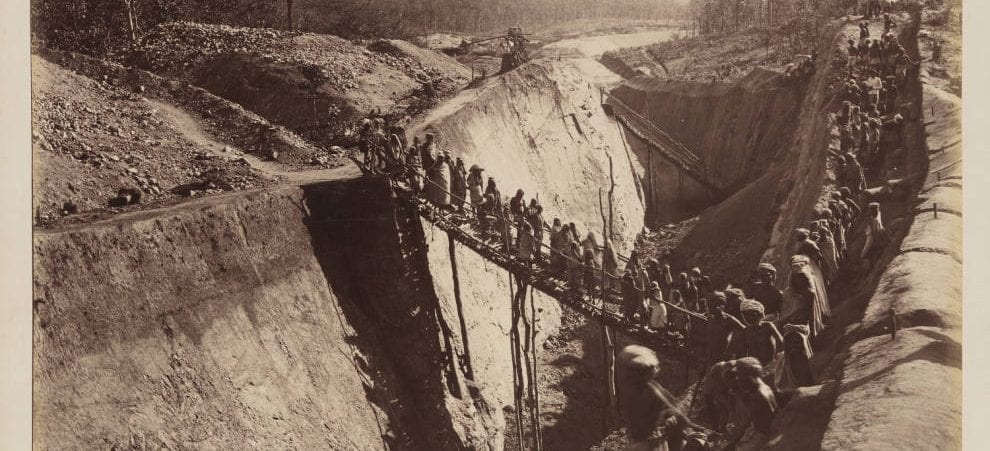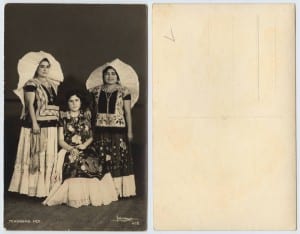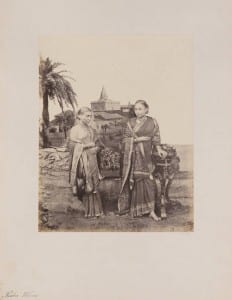While one flips through photographs of ages long past, the portrayal of native people in their traditional clothing becomes noticeable. It is through a lens of colonialist bias that we come to learn who the native people are, what they are like and what their everyday activities are. This first photograph, taken by a photographer of the name Yanez and was taken sometime between 1918 and 1929 in Mexico. The focuses of this photograph are three women that are dressed in traditional garments from Tehuana. These dresses are fabulously detailed, as can be seen in the extensive needlework in the skirt of the lady to the far left and the many patterns that present themselves boldly on the upper portion of the dresses. The fabric is also of a decent quality; it is not a typical linen or cotton, but rather appears to be silk that is detailed with flowers and other geometrical patterns. Each woman wears jewelry as well, and the two outside women also display headdresses. They all gaze directly at the camera and are clearly posed for the photograph. From all of these details, one can deduce that these women were not suffering financially due to the quality of fabric and detail to their garments. They are also adorned with jewelry, which implies a certain amount of wealth. Their general demeanor is rather relaxed and comfortable as well, implying that everything is stable in their lives. It is important to note though, that this is a picture for a postcard. Generally, one would rather promote an image that portrays the region in a positive light, ideally drawing in tourism and a good image that way. This makes it entirely possible for this image to be a representation of a colonial bias and the desire to show native people that are content, completely ignoring those that are not.
The central subjects of this photograph, taken by William Johnson between the years 1855-1862, are two Parboo Indian women. They stand silently amongst a rock wall and an ornate pedestal or table of some sort. In the background are palm trees and buildings. The women wear traditional Indian dress for women, called a sari. One’s eyes are immediately drawn to the beautiful variety of fabric that the women wear, with what one would imagine to be difficult to craft paisley pattern. This type of finery does not imply a poor lifestyle by any means. In fact, it implies that these two young women are well off and are part of a high caste (social ranking). But when the eyes glance down, one can note that they do not wear shoes. This substantiates the way colonizers viewed native people, who were “exotic” and somehow socially inept because they did not yet “benefit” completely from British culture. They are also very carefully posed; one woman leans slightly against the pedestal, as if on display. One can presume that the intention of photographs that documented native people in their “traditional” clothing and environments was to exemplify a preconceived notion of the colonizers that natives were “exotic”. After rifling through many photographs form this time period and region, there seem to be more photographs that document the wealthier natives than there are photographs that show poverty and the crushing weight of colonialism. This photograph portrays two Indian women who fit what the British wanted to document, but whose voices could not speak through the photograph to say how they truly felt.



